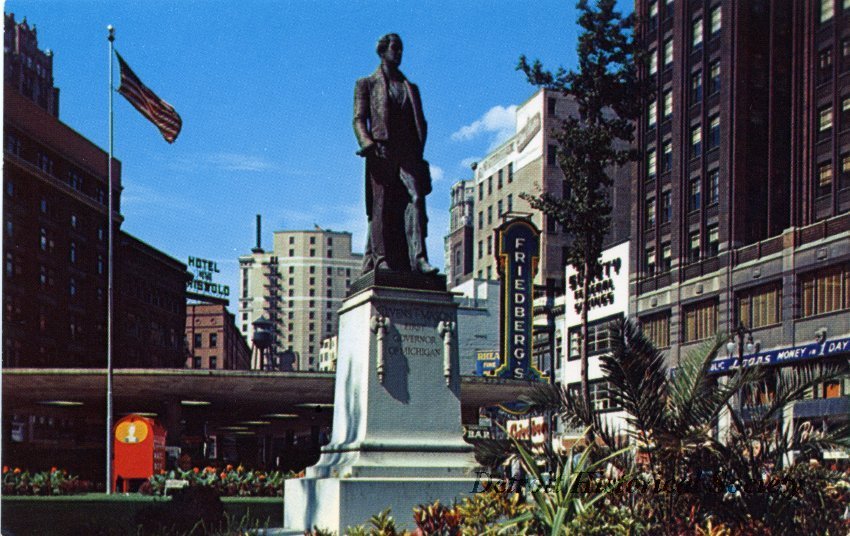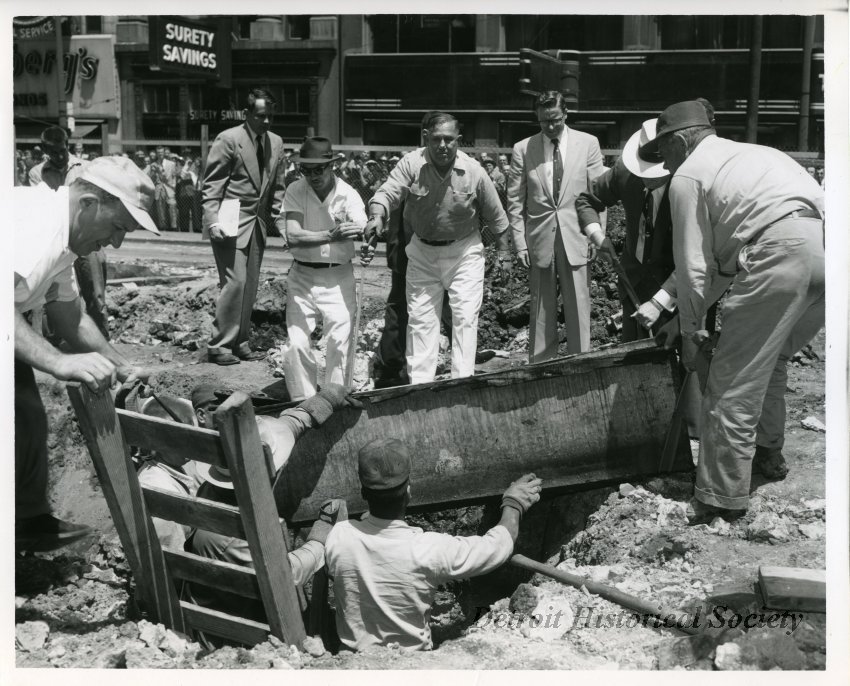Encyclopedia Of Detroit
Mason, Stevens T.
Michigan’s first governor, Stevens T. Mason, was also its youngest, serving from 1835-1840. The “boy governor,” led Michigan as a territory, then as the state he helped forge. Part of his legacy is moving the University of Michigan from Detroit to Ann Arbor and supporting a plan for free public schools.
Stevens Thomson Mason was born in Loudoun County, Virginia on October 27, 1811 to John T. Mason and Elisa Baker Moir into an important political family containing U.S. senators, governors and a member of the Constitutional Convention. Mason’s family moved to Lexington, Kentucky in 1812 where John Mason was made a U.S. marshal by President Monroe in 1817. The next move was to the Michigan Territory where the father was appointed secretary of the Territory and superintendent of Indian Affairs by President Andrew Jackson in 1830.
When John Mason resigned after one year for a position as a land agent in Texas, President Jackson replaced the father with the son; Stevens was 19. In his position as secretary of the Michigan Territory Mason was frequently called upon to be acting governor, in the absence of Governor George Porter. Porter died in 1834 and Mason took his place as full-time acting territorial governor.
In 1835 Michigan voters approved the state’s constitution and Mason was elected governor. However, Michigan was not admitted to the Union until January 26, 1837 due to a border dispute with Ohio known as the Toledo War. Mason was then elected governor of the state that year.
He served one term as governor of the state but made significant contributions. He hired the state’s first geologist, Douglass Houghton, appointed a superintendent of public instruction so free public schools could be established, and obtained land in Ann Arbor as a permanent site for the University of Michigan.
When the state’s bond sale to fund an internal improvement program failed due to the Panic of 1837, Mason decided not to run for reelection. Mason’s reputation suffered when his successor William Woodbridge blamed the state’s $2,000,000 debt on Mason.
Mason retired from politics after his tenure as governor and moved to New York City with his wife in 1841 to practice law. He died there of pneumonia on January 4, 1843 and was originally buried in New York Marble Cemetery. In 1905 his body was disintered and transported to Michigan accompanied by his daughter and a sister, and was met in Detroit by a company of the Detroit Light Guard.
At a ceremony attended by Detroit mayor George P. Codd, Michigan governor Fred Warner, Clarence Burton, president of the State Pioneer and Historical Society, and thousands of citizens, Stevens T. Mason was buried at the site of the first state capitol, in Capitol Park. A life-size bronze statue of the “boy governor” by Albert Weinert was placed on the site in 1908, however a redesign of the park required the grave and statue to be re-situated in the park in 2010.



